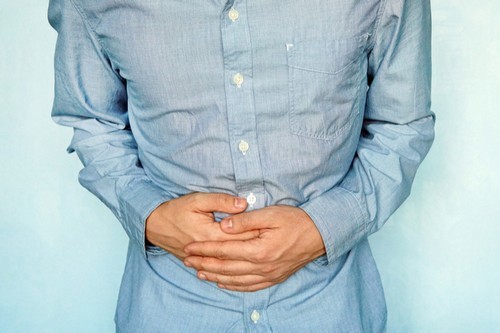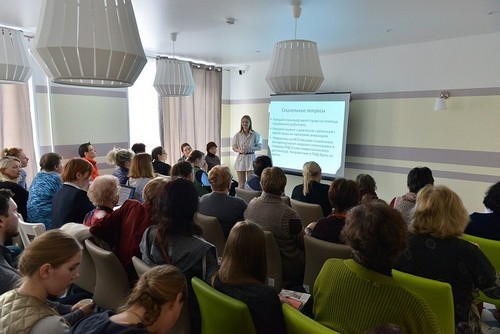Many women cystitis is costreceived and debilitating disease that leads to neurological and psychosomatic disorders.
What is cystitis?
Let’s start with a definition. Cystitis is infection-inflammatory disease of the bladder. From the definition, we understand that the cause of cystitis is infection. Indeed, approximately 75%, Escherichia coli.
Followed by enterococci and Klebsiella. They are representatives of the normal intestinal microbiota. A small percentage of cases, cystitis is caused by the herpes virus. Viral cystitis is manifested usually severe pain, and the admixture of large amounts of blood in the urine. Leukocytes in the urine thus, as a rule, is not observed.
What is cystitis?
The classic clinical picture of acute cystitis: pain and cramps during urination, urination in small portions learning. In hemorrhagic cystitis bright and intimidating patients symptom is a admixture of bright red blood in the urine. However, in acute cystitis bleeding is never life-threatening and health.
For chronic cystitis is characterized by: a constant or periodic pain and a feeling of heaviness above the vagina, worse when bladder is full and reaches the greatest intensity at the end of urination. Frequent urgent need to urinate, the symptoms of urine neutercane. These symptoms are debilitating patients.
The most persistent current differs interstitial cystitis, painful urination in which quickens to 40 times a day and is accompanied by pain in the perineum and suprapubic region. In some patients with interstitial cystitis leads to wrinkling of the bladder that require surgical treatment. Diagnosis of cystitis is based on anamnesis, clinical manifestation and laboratory examination of urine.
What factors contribute to the development of cystitis?
One of the key hypothermia. Typically the reasons for his standard: wet feet, chill air conditioning, had to endure a full bladder in a traffic jam, tight underwear made of synthetic fabrics… But why not all women, promuchivshis legs “blown” with air conditioning, preterpela long-term full bladder and wearing cut sick with cystitis?
Here it is more complicated. Many researchers are among the main reasons are:
- the low level of female sex hormones – estrogens. They are the physiological protectors of the lower urinary tract from ascending infection;
- of the vaginal pH above 5, resulting in the violation of the normal microbiota of the vagina (bacterial vaginosis, vaginitis);
- frequent constipation or irritable bowel syndrome;
- a sedentary lifestyle, which results in venous congestion and stagnation in the pelvis, and the factor of bad circulation is one of the most important in triggering the inflammatory response;
- anatomical features: vaginal ectopia of the opening of the urethra in which the external opening of the urethra is located too close to the entrance of the vagina;
- hypermobility of the meatus, with urethral colormaterial alone is located at a normal distance from the entrance to the vagina but during intercourse due to the weakness of the ligament moves inside the vagina.
According to statistics, about 40% of cases of cystitis in women appear after sexual intercourse. Probably this figure is somewhat exaggerated, because “post-coital” cystitis is considered if it occurred from 12 to 48 h after coitus.
How to treat cystitis?
Acute cystitis is recommended rest, sparing diet, drinking plenty of fluids (up to 2-2. 5 l of fluid per day). You should also avoid overcooling of the body, to ensure regular bowel function, eliminate sexual intercourse. When expressed pain prescribe rectal suppositories with nonsteroidal anti-inflammatory drugs. Antibacterial therapy is carried out taking into account the sensitivity of flora to antibiotics, to which uroantiseptiki prescribed and herbal diuretics. It is important that in hemorrhagic cystitis should be appointed not uroantiseptiki, and from antibiotics.
“Doctor, I have cystitis again. Neskolko? I just recently finished antibiotics”. I hear quite regularly. Short courses of antibiotic therapy, unfortunately, often ineffective. In the treatment of chronic cystitis important are the identification and rehabilitation of foci of infection in women, treatment of gynecological diseases. Anti-inflammatory and immunotherapy of chronic cystitis in many cases must be combined with intravesical the introduction of medicines, reducing glikozoaminoglikanov layer of the mucosa of the bladder.
This will restore the antibacterial immunity of the bladder, as bacteria are able to penetrate deep into the bladder wall and cause inflammation. It is necessary to conduct monthly bacteriological examination of urine, especially in the first 6 months after the medication is discontinued. Detection of infection is an indication for a repeated course of anti-inflammatory therapy.




Thanks a bunch for sharing this with all of us you actually know what you’re talking about! Bookmarked. Kindly also visit my website =). We could have a link exchange arrangement between us!
I am a bit discombobulated about this article?
What i don’t understood is actually how you are not actually much more well-liked than you may be now. You’re so intelligent. You realize therefore significantly relating to this subject, produced me personally consider it from so many varied angles. Its like women and men aren’t fascinated unless it is one thing to accomplish with Lady gaga! Your own stuffs great. Always maintain it up!